12 Stunning Medieval Villages in Southern France
Most medieval villages in France are charming. But some particularly stand out visually, clinging to cliffs, hanging over gorges, or stretching along ridgelines with castles at the top.
These twelve villages in the south of France are worth the detour for one reason: they look incredible.
1. Saint-Cirq-Lapopie (Lot)
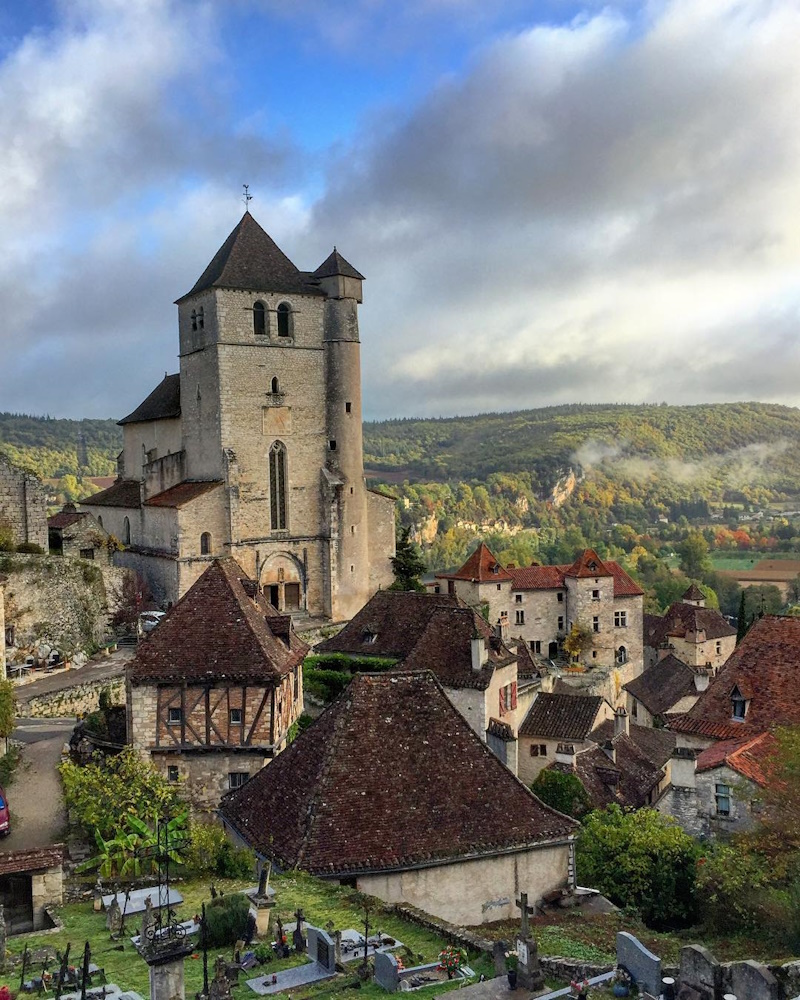
This village rises directly above the Lot River, with houses stacked tightly on a cliffside like a natural amphitheater.
Almost every path leads to a viewpoint. The streets are stone, crooked, and built on serious slopes. Half-timbered houses, pointed Gothic arches, and sculpted doors show how wealthy and important the place once was.
It’s heavily visited in summer, but early morning or late evening brings a quiet, timeless feel.
2. Rocamadour (Lot)
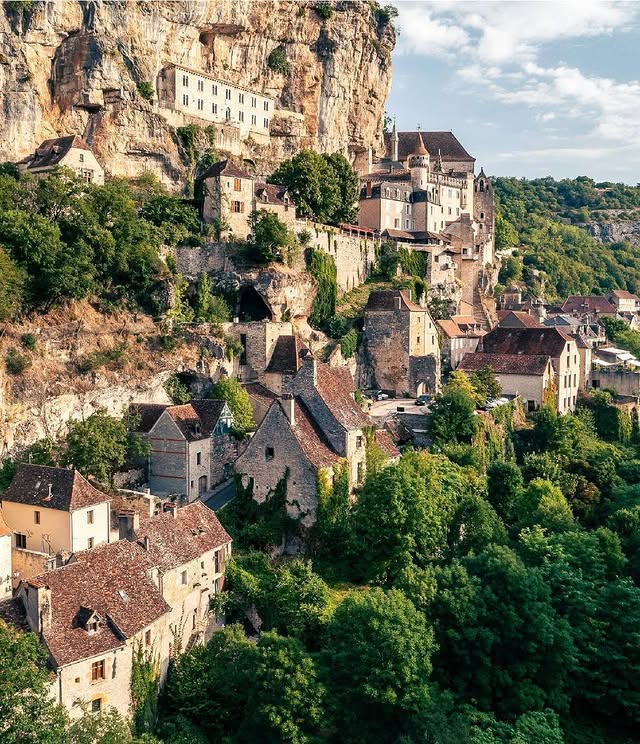
Built vertically into a limestone cliff, Rocamadour looks almost impossible. Its chapels and sanctuaries are stacked on ledges above the Alzou gorge, connected by staircases carved into rock.
Pilgrims still come to see the Black Madonna, but even without the religious interest, the visual spectacle is worth the detour.
The approach from below is especially impressive: stop at the l’Hospitalet viewpoint before driving in.
3. Cordes-sur-Ciel (Tarn)
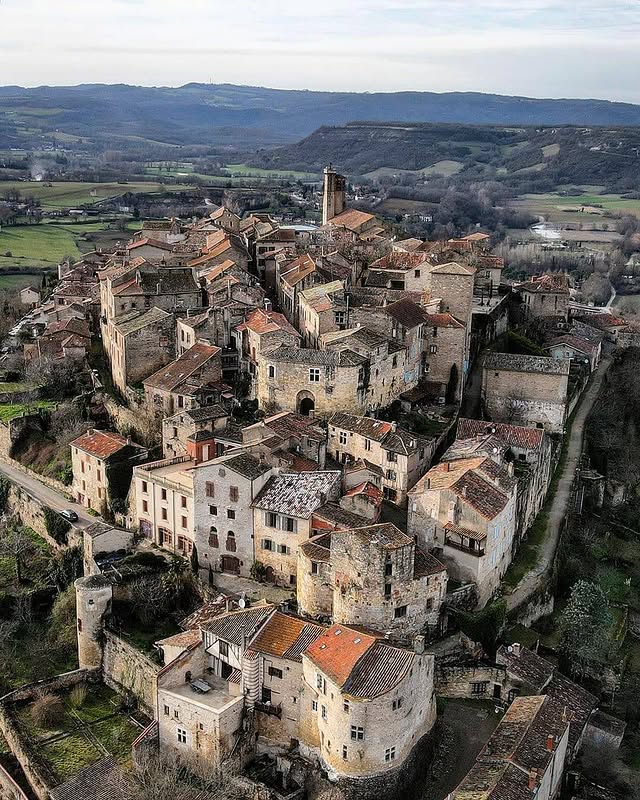
Cordes sits high above the Tarn valley, and when the mist rolls in, it earns its name: “on the sky.”
The old merchant houses here are unusually tall and refined, built by wealthy residents during the 13th century. Carvings, Gothic windows, and pointed doorways hint at how prosperous this place was during its peak.
The uphill walk is steep but essential. Most of the streets are pedestrian only.
4. Les Baux-de-Provence (Bouches-du-Rhône)
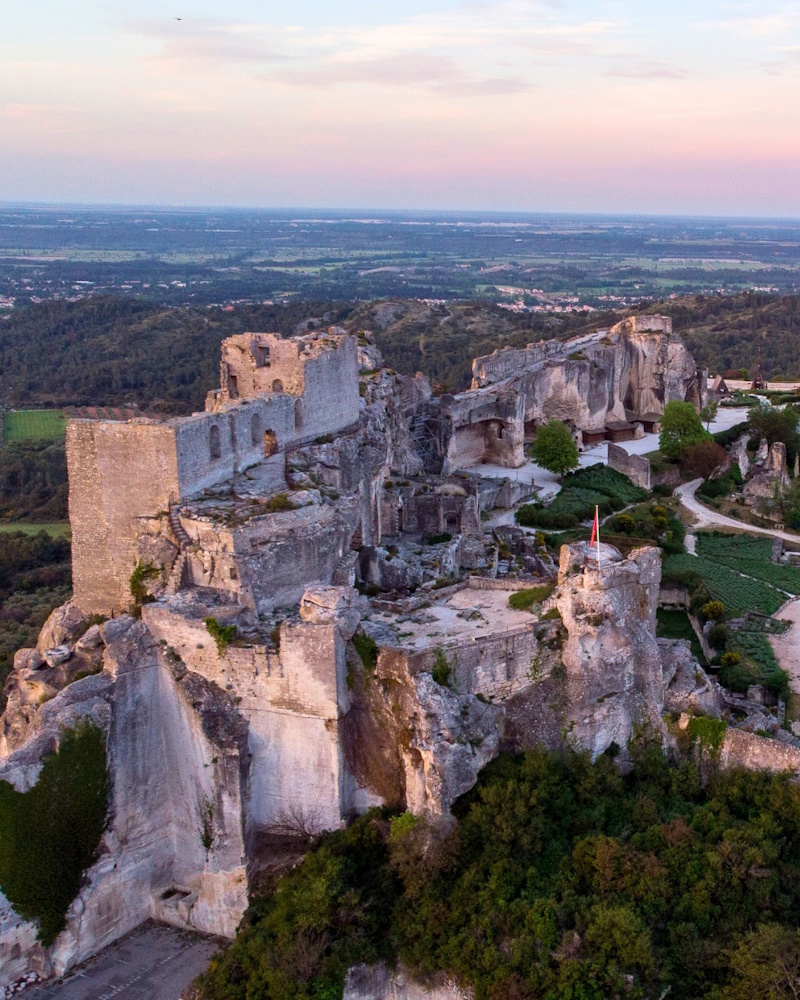
The ruins of Les Baux dominate a limestone ridge in the Alpilles. Below the old castle, the village streets are packed with stone houses, a church, and small squares.
The views stretch across olive groves toward Arles and the Camargue. Les Baux itself can be crowded, but it’s worth coming early or off-season.
While you’re there, Carrières des Lumières (a digital art show in a limestone quarry) is a few steps away.
5. Minerve (Hérault)
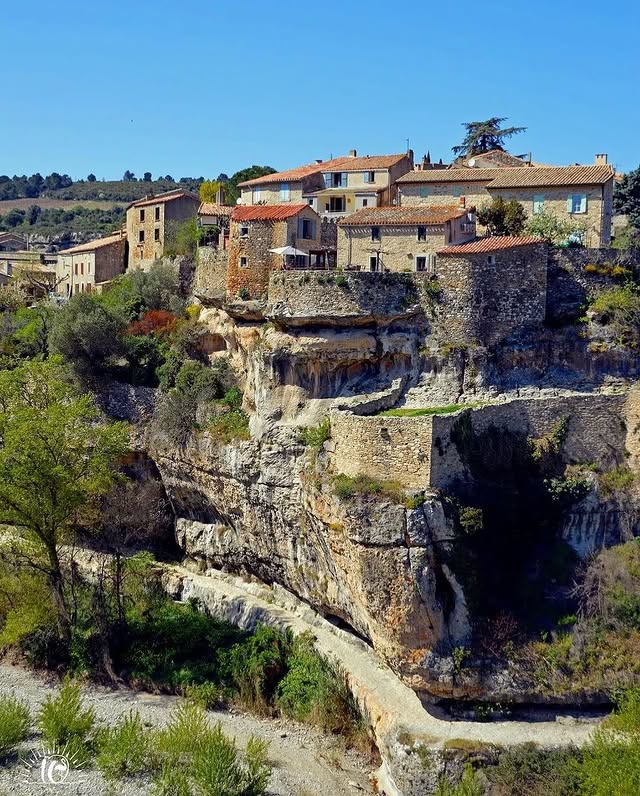
Built on a rocky outcrop at the meeting point of two deep canyons, Minerve looks like a natural fortress.
The village itself is compact, with archways, ruined towers, and narrow lanes. The setting is what makes it unforgettable. A natural bridge carved by water sits just below the main path, and the views from the rim trails are wide open.
The history is tied to the Cathars – you’ll see reminders of the siege that took place here in 1210.
6. Moustiers-Sainte-Marie (Alpes-de-Haute-Provence)
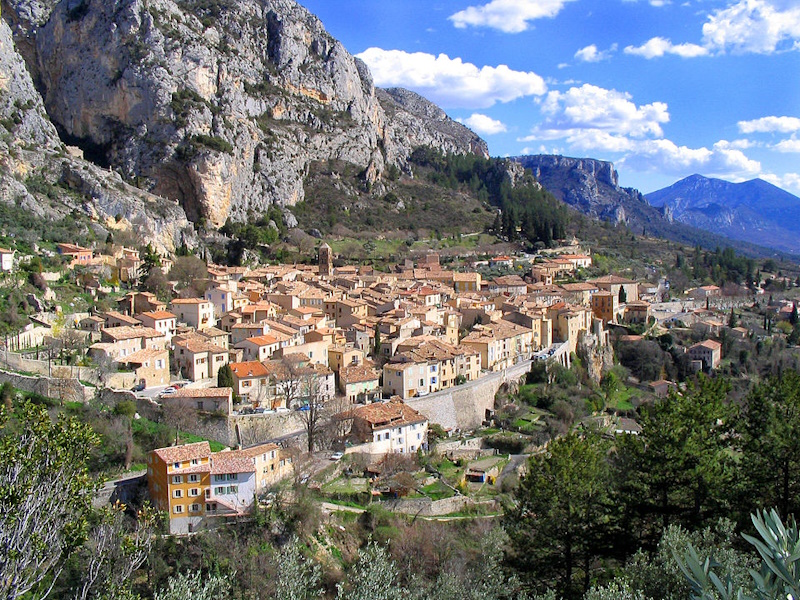
Two cliffs rise sharply behind the village, joined by a chain that suspends a star above the rooftops. Below, houses in soft Provençal colors cluster along a stream, with fountains and stepped alleys around every corner.
A small chapel sits at the top of the cliffs, accessible by a steep hike with panoramic views of the village and the nearby Lac de Sainte-Croix.
Moustiers is also a center for faïence pottery, with workshops and galleries throughout.
7. Najac (Aveyron)
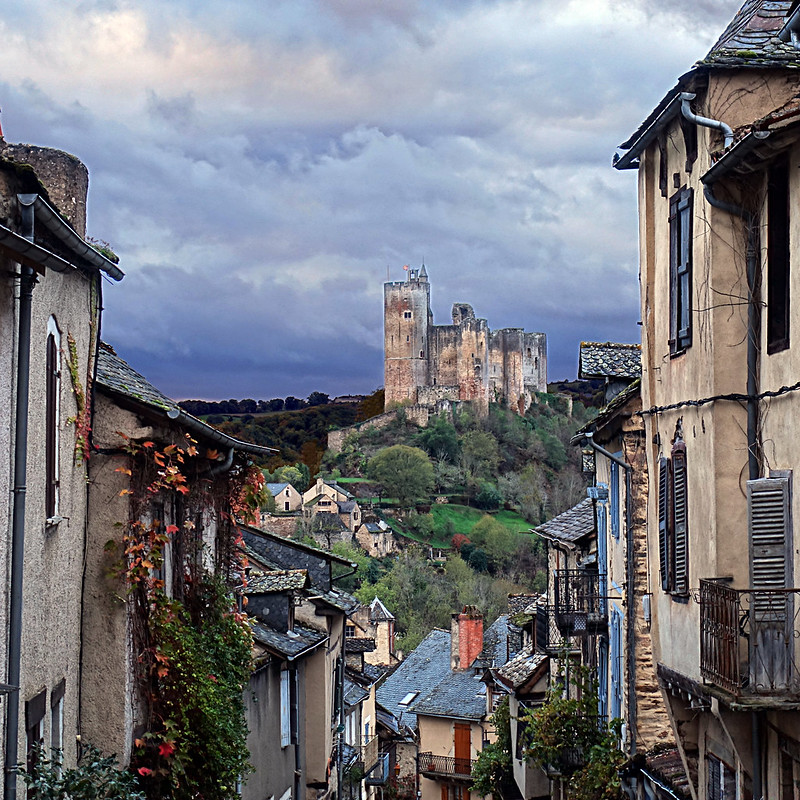
Najac is built along a narrow ridge, with houses lining a single road that leads to the castle at the top.
From a distance, it looks like a painting: stone facades, slate roofs, and a fortress looming above the trees.
The château is partially ruined but still accessible, and the views from the tower cover miles of forested hills.
The layout is unusual, long and linear, with a feeling of isolation that adds to its appeal.
8. Aiguèze (Gard)
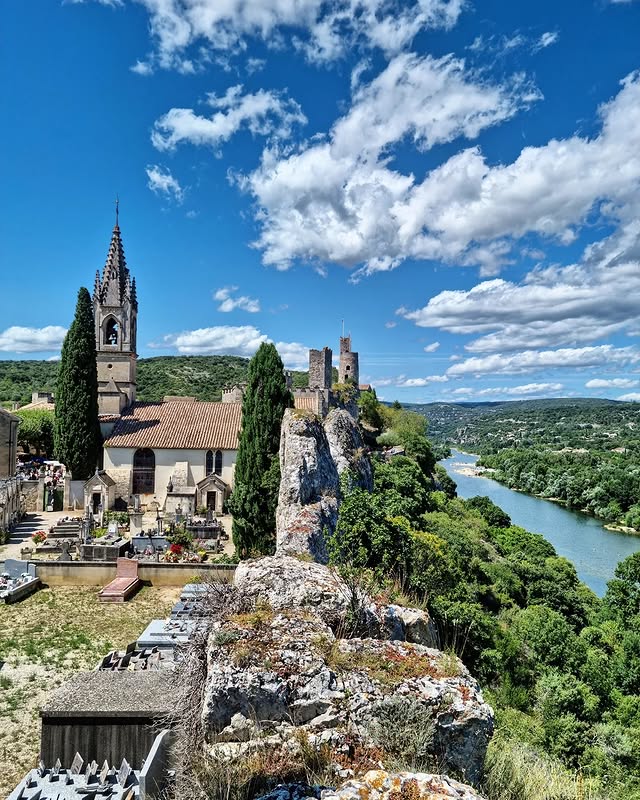
Aiguèze overlooks the Ardèche River from a high rock outcrop, with restored ramparts and a square tower framing the view.
It’s a small village, walkable in under an hour, but every corner feels composed. Stone walls, vines, arches, and panoramic views make it highly photogenic.
Also an ideal stop for exploring the Ardèche gorges or canoeing the river.
9. Castelnou (Pyrénées-Orientales)
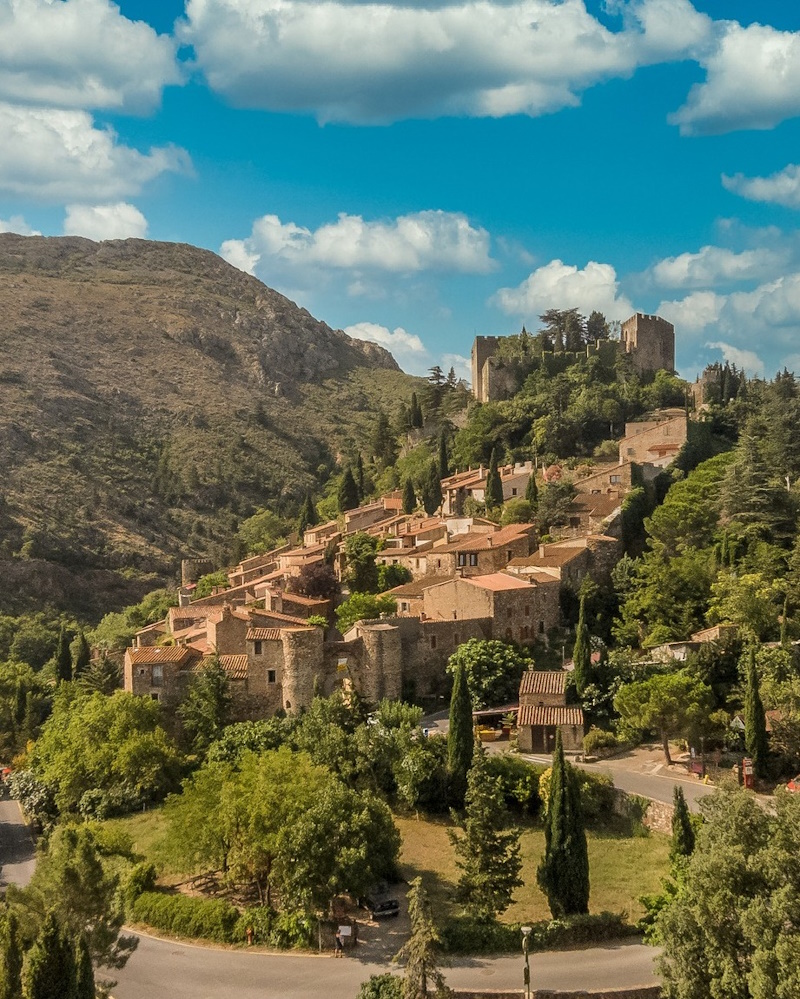
In the foothills near the Spanish border, Castelnou wraps around a 10th-century castle.
The layout follows the hill’s curve, with terraced houses built in pinkish stone and topped with terracotta roofs. It’s small, quiet, and still has a very local feel outside the summer months.
The surrounding landscape is dry and open, and the view from the castle over the plain is one of the best in the region.
10. La Couvertoirade (Aveyron)
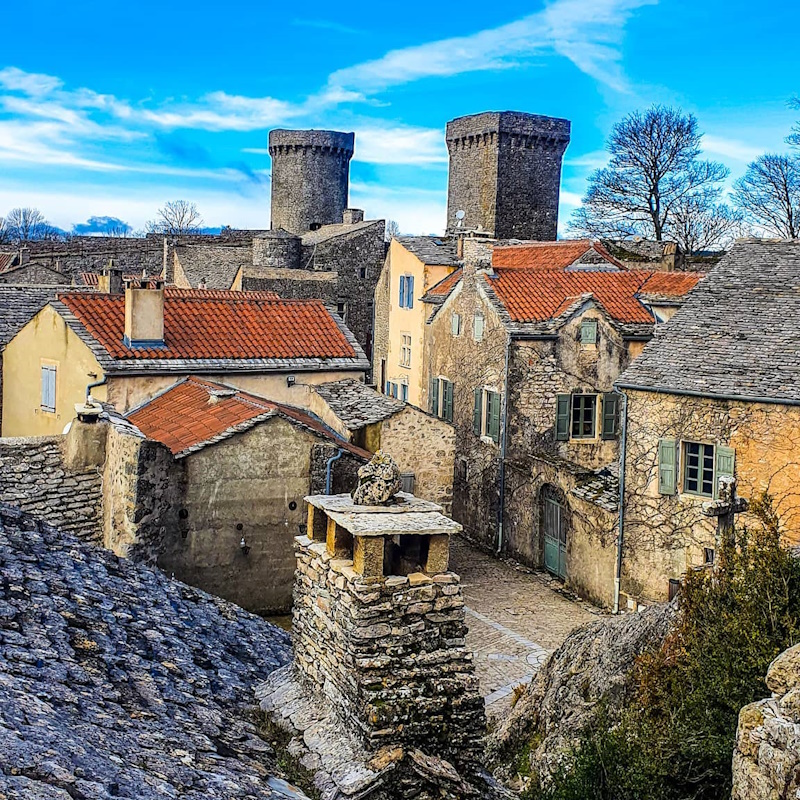
Unlike most villages on this list, La Couvertoirade is entirely enclosed by walls that are still intact.
Built by the Knights Templar, it has a military layout and a raw, remote feel, especially in early spring or late fall when it’s nearly empty.
Inside, the lanes are tightly packed with stone houses, a fortified church, and windmills on the plateau above.
It sits on the Larzac, a barren limestone plateau that adds to the atmosphere of isolation.
11. Sainte-Enimie (Lozère)
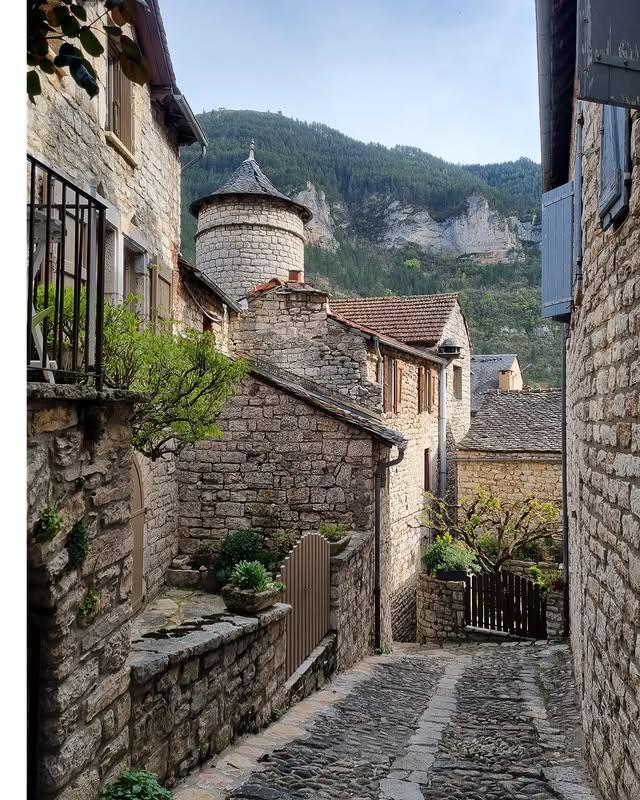
This village sits in a deep fold of the Tarn Gorge, backed by steep limestone cliffs and fronted by turquoise water.
The stone houses are clustered around a former Benedictine monastery, with alleys that climb up toward the cliffs.
A bridge crosses the river, and in the summer, canoes line the banks. The setting is wild and striking, and even the drive to get here is memorable.
12. Eus (Pyrénées-Orientales)
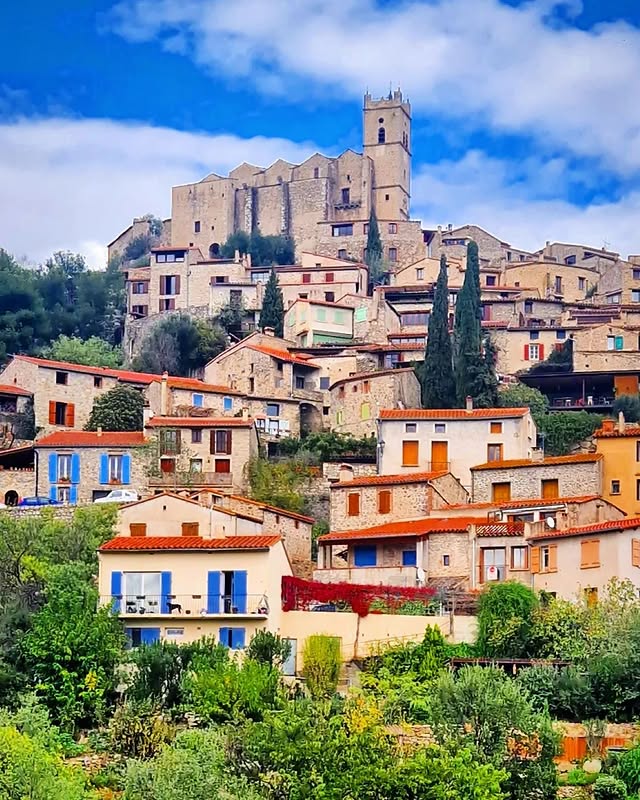
Eus is set on a sun-facing hill with the Canigou mountain as a backdrop. The stone houses are stacked up the slope, all oriented to catch the light.
The village leads up to a fortress-like church at the top, with winding footpaths and terraces along the way.
From certain angles, the whole village looks like a stepped amphitheater. It’s dry, rugged country, especially dramatic under a blue sky.
